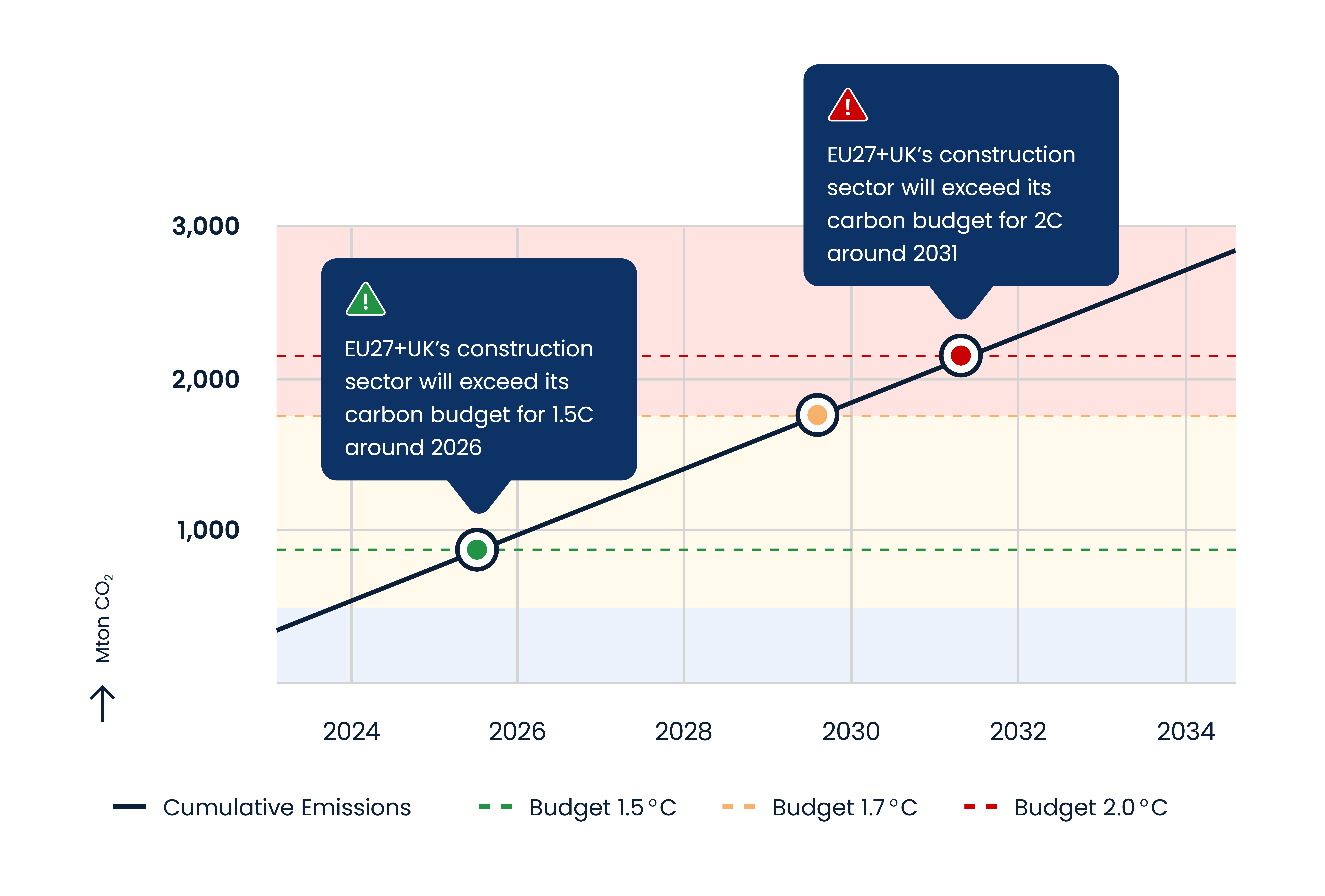The European construction industry is a significant contributor to greenhouse gas emissions, accounting for 9% of the EU’s total annual emissions, about 277 million tonnes of CO2 per year.
Alarming statistics reveal that at its current rate, the industry will already exceed its ‘budget’ for carbon emissions by 2026. That’s less than three years.
“It’s time to make radical changes so that the industry can reduce its carbon footprint, and more importantly, ensure that humanity can remain within planetary boundaries,” said Ivan Thung, the program lead of the Circular Buildings Coalition. “Adopting the principles of a circular economy is the best way forward to face those challenges.”
Recognizing the need for solutions that will help the industry reduce carbon emissions, the Circular Buildings Coalition (CBC), led by Metabolic and supported by the Laudes Foundation, has released a groundbreaking report titled “Towards a Circular Economy in the Built Environment.” The CBC, a collaboration between Circle Economy, the World Green Building Council, the World Business Council for Sustainable Development, the Ellen MacArthur Foundation, Arup, and Metabolic, aims to accelerate the adoption of circular economy strategies in the European built environment.
Building according to circular principles creates value for businesses while reducing environmental impact. The report identifies ways to ensure compliance with forthcoming EU regulations, unlock business value, and turn waste into valuable resources.
Identifying the challenges and strategies is just the first step. The CBC is determined to break down barriers to a circular built environment by funding projects addressing these challenge areas.
“Scaling existing solutions is crucial to accelerate the transition to a circular economy in the built environment,” said Job Papineau Salm, a sustainability consultant at Metabolic. “We are excited to help fund frontrunners to overcome existing barriers in order to scale and create demand for their solutions.”
The impact of the built environment
The scale of the construction industry’s material consumption is staggering. More than 1 million kilotonnes of material is used annually, just in the EU. To put that into perspective, that is enough to build 185 Pyramids of Giza every year.
Diving deeper into the data, we found that:
- 74% of this material is concrete;
- 66% is used in Western Europe;
- 75% is used to build housing; and
- 54% is used specifically in single-family homes.

A significant amount of this material is ultimately wasted. Demolition in the EU and UK generates roughly 124 million tonnes of waste annually. That’s roughly equivalent to the weight of one tiny house for every inhabitant in Hungary and Austria — every year — or more than 12,000 Eiffel Towers. About 80% of the waste from demolition is mineral-based materials, such as concrete or bricks.
Western European countries produce 1.5 times as much demolition waste per inhabitant compared to the EU average, and more than 3 times as much compared to Central and Eastern Europe or Southern Europe.
About 64% of the disposed materials are supposedly recycled, but as there is no standardized reporting system across Europe, it is difficult to compare material availability and end-of-life scenarios. That means they are “downcycled” and not re-used in the construction of new buildings.
“The results of our data analysis were eye-opening, and follow what we’ve seen in other smaller-scale studies in the Netherlands,” said Mink Rohmer, data analyst at Metabolic who led the research and analysis for this report. “There’s still work to be done on improving the availability and quality of the data concerning end-of-life treatment for construction and demolition waste. This would allow us to have more granular insight into what countries are doing well in terms of circular treatment of this waste, which we could use as a blueprint for the rest of Europe.“

If the sector continues on its current path, it is projected to exceed its carbon budget for limiting global warming to 1.5 degrees by 2026. Without immediate action, the carbon budget for 1.7-degree and 2-degree warming limits will be depleted in 2029 and 2031, respectively.
What is circular construction?
The study was based on in-depth interviews with more than 50 stakeholders across the construction value chain. It identified four key circular construction strategies: reducing new construction, maintaining buildings at their optimum worth for long-term value, building more efficiently, and utilizing recycled, renewable, and bio-based materials.
The study reinforces the urgency of transitioning to circular models in the built environment, particularly for decarbonization, waste reduction, and new economic value creation.
The report also identified the many benefits of circular strategies in three areas:
- Environmental: Up to 12% of virgin materials could be replaced with secondary materials if the EU27+UK’s construction industry becomes ‘zero-waste.’ Circular interventions, such as optimizing resource use by utilizing the existing building stock through maintenance and retrofitting, would further reduce virgin material demand.
- Economic: Transitioning to a circular economy could generate a net economic gain of €1.8 trillion per year and increase the region’s GDP by up to 7%.
- Societal: Applying circular principles could create new job opportunities.
Challenges to this transition remain, such as biases towards secondary materials among builders and developers. Upcoming shifts in European legislation, such as the Construction Product Regulation (CPR) and the Extended Producer Responsibility (EPR), present opportunities for a more transparent and regulated secondary materials market through certifications and warranties for safety and quality. Moreover, the European Green Deal and its decarbonization targets are pushing the industry to lower its carbon footprint, which incentivizes the adoption of circular strategies.
“Stakeholders in the built environment who anticipate these legislative and economic transformations and take preemptive action by adopting circular principles will be well-positioned to lead resilient organizations,” says Eva Gladek, CEO and founder of Metabolic.
The study’s authors call for a wider acceptance and scale-up of circular business ownership models.
“Through this research, we have seen inspirational projects around the world,” said Nico Schouten, lead of the Built Environment team at Metabolic. “Now we hope the industry can look towards these as best practices, and combine and scale up the ideas. That’s how we can have a more meaningful and significant impact.”
For example, ‘open building design’ divides building components into layers, allowing for their independent disassembly and repair, thus prolonging the building’s lifespan. Innovative business models, such as Product-as-a-Service (PaaS), will incentivize owners to maintain in-use buildings for as long as possible. Furthermore, non-profit ownership models like cooperatives put long-term value above short-term profits, promoting more sustainable construction practices.
Blueprint Projects will lead the industry
The CBC’s study identified policy as a theme across three key challenge areas: markets and supply chains, ownership models, and financing mechanisms.
To address these challenges, the CBC launched Blueprint Projects, a funding scheme to support European solutions that tackle systemic barriers to a circular built environment. Selected projects will receive funding to become showcase examples for the industry.
“As part of the Blueprint Projects, we’re bringing together initiatives that can truly accelerate the transition to a circular economy in the built environment,” says James Drinkwater, head of the Built Environment at Laudes Foundation. “With our support, they will lead the construction industry towards a sustainable, low-carbon, and circular state, which will benefit everyone.”




